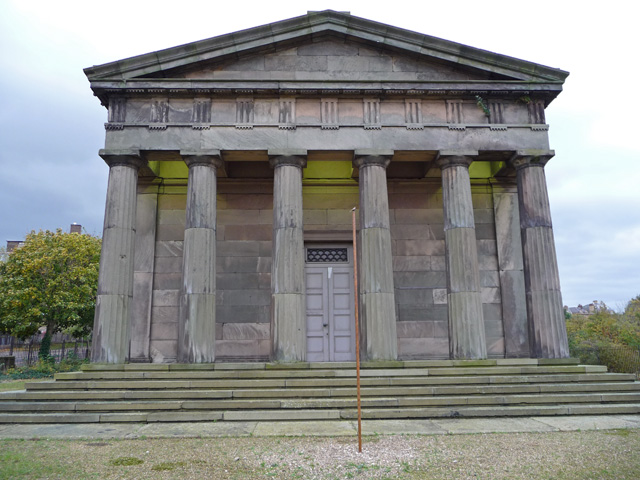Around the turn of the Millennium the term ‘Three Graces’ was coined by local media to describe Liverpool’s three iconic waterfront buildings, as designs were invited for a fourth one. Various proposals didn’t materialise and the Museum of Liverpool stands there instead, but it could well be argued that the Fourth Grace has already been there for eighty years.
The George’s Dock Ventilation Tower does its best to squeeze itself between the Cunard and Port of Liverpool buildings to get into any waterfront shot but on the whole it goes virtually unnoticed due to its illustrious neighbours. If it was situated in any other city in the country though, it would be promoted as a standalone tourist attraction.
Built between 1931 and 1934, the tower contains two giant extractor fans, providing ventilation to the Queensway Tunnel that connects Liverpool with Birkenhead. It was designed by Herbert J. Rowse, whose other works include India Buildings and the Philharmonic Hall. Like many others who used an Art Deco style, Rowse was influenced by the discoveries in Egypt of the 1920s, most significantly Tutankhamun’s tomb, and this is reflected in some of the carvings on the stonework.
The building is dominated by its central angular shaft, which is surrounded by five storeys of offices housing the tunnel control rooms. Underneath there are five basement levels. The sculpture was carried out by Edmund C. Thompson and George C. Capstick. The tower contains winged reliefs reaching for the sky, similar to an Egyptian pylon. On the west side of the building (facing the Port of Liverpool Building), two basalt figures are called Night and Day, given that the tunnel never closes. Also on the west facade is a seven foot high relief called Speed, representing how fast it is to go through the tunnel. On the east side, set back into the brickwork facing The Strand, a black marble memorial lists the seventeen workers killed in accidents during the construction of the tunnel.
To the north and south of the building there are raised paved areas. The southern one contains a compass, while the one to the north contains an original toll booth and a City of Liverpool Heritage Plaque. On the north wall there is a plaque provided by the Institute of Civil Engineers, although his commemorates the Liverpool Overhead Railway which ran past the building.
The two fans are situated in a large chamber and are nine meters in diameter, with the blades being three metres wide. They have never been replaced and are so powerful that the air inside the tunnel is twice as clean as that in the streets of the city. The ventilation though was something of an afterthought, the building of the tunnel having been well advanced when the go ahead was given for the spending of an additional £2 million, taking the total cost up to £8 million (about half a billion pounds today). It had been decided to add ventilation shafts when drivers at the Holland Tunnel in New York were found to be falling asleep at the wheel due to the effects of carbon monoxide poisoning.
Tours of the building are available at the cost of £5 although they must be booked in advance. Further details can be found here.




Recent Comments